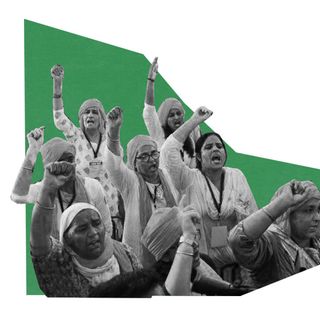Portrayals of disability on screen have nearly tripled over the past decade — compared to the one before that — but the representation of disabled actors is still abysmal, according to a new study that analyzed depictions of disability in Hollywood.
Published by Nielsen, a global market research company, and RespectAbility, a nonprofit organization, the study analyzed the representation of disabled characters on film and television shows over the last century — from 1920 to 2020.
The research noted an upswing in the number of productions that wove in disability themes — from 41 films in 2000 to 150 in 2020. However, as a result of not being written or played by actually disabled people, the depictions are often riddled with stereotypes and make one’s disability their defining characteristic — resulting in disabled audiences being 8% more likely than their able-bodied counterparts to criticize the portrayals as inaccurate.
In India, too, the situation is hardly any different — if not worse. A 2015 study, which analyzed portrayals of disability in Indian cinema since the 1930s, found that we tend to depict disability as a punishment for one’s karma, as comic relief, as a trait associated with villains, and often as “inspiration porn,” where the struggles of people with disabilities are objectified for a largely non-disabled audience.
Related on The Swaddle:
Why We Expect People With Invisible Disabilities To Learn To Act ‘Normal’
Moreover, disabled female characters in Indian cinema are dealt more pity than their male counterparts, and the act of someone choosing to be romantically or sexually involved with the disabled female characters is portrayed as “social service,” as Abha Khetarpal, a disability rights activist, wrote, citing the examples of Vidya Balan’s character from Guru and Manisha Koirala’s from Mann.
“When disability is a part of a character’s story, too often content can position people with disabilities as someone to pity or someone to cure, instead of portraying disabled individuals as full members of our society,” Lauren Appelbaum, a vice president at RespectAbility, told The New York Times.
Comparing how male and female disabled characters are treated differently, Khetarpal referred to Barfi, saying, “she [an autistic character played by Priyanka Chopra] is dependent, frightened and her own parents are ashamed of her condition in contrast to the male protagonist [played by Ranbir Kapoor] who also has a disability but is independent, fearless, caring and responsible just to establish the alleged valor and nobility of manhood.”
And, of course, none of these characters were played by actually disabled people. Even Margarita with a Straw, which was hailed for “humanizing [the] lead characters,” cast able-bodied actors to play characters with cerebral palsy and impaired vision. Moreover, it was also prey to another otherizing trope — a disabled person can only have a fulfilling relationship with another disabled person. This echoes the findings of the present study on Hollywood, which found that 95% of disabled characters are played by actors without disabilities.
However, in a society where ableism continues to be rampant, even in the way we describe disabled individuals, it is time that movies, which hold the power to drive significant social change to embed accuracy and sensitivity in their portrayals of marginalized communities. A good place to start, perhaps, is to include actually disabled people in narratives on disability.




